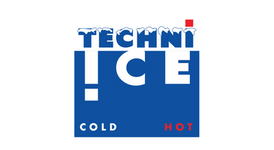
FREQUENTLY ASKED QUESTIONS
Find the answers to your questions about Polyklear Fiberglass + Resin products, procedure and applications here.
No. Polyklear Epoxy Resins have set resin to hardener ratio. Increasing the hardener content (or decreasing it) will result to improper cure. For a faster curing, the only thing that can be done is to increase the ambient temperature, e.g. using an oven or a heat lamp.
Yes. The minimum recommended amount of hardener that should be added to polyester resin for proper cure is 1 gram per hundred grams resin. For faster cure, this can be increased to up to 2 grams per hundred grams resin.
The ideal storage temperature for Polyklear resins and catalysts is 25℃, in a place away from moisture and sunlight.
No. Basically, the suitability of R99-402-SW RESIN-GP VINYL ESTER as corrosion barrier will depend on three factors: the type of chemical it would be in contact with, its concentration and the operating temperature. For example, a 50% sulfuric acid solution can safely be contained in a VE corrosion barrier at up to 99℃, but not recommended at temperatures over 99℃.
Typically addition of another resin layer is done while the previous layer is still tacky so that layers are bonded chemically, hence a strong bond. If the previous layer is already cured and addition of another layer is required, light sanding of the part is necessary so that the next layer would adhere properly. However, the first method is preferable and highly recommended.
Diluting gelcoat with styrene monomer is not recommended as it will degrade the quality of the output. Styrene monomer participates in the curing process and too much addition (greater than 2%) may lead to a brittle finished product. If thinning is needed, for example to make gelcoat more sprayable, you can dilute it with pure acetone. Acetone, unlike styrene monomer, doesn’t participate in the curing reaction as it easily evaporates, thus would not lead to quality problems on finished product.
Yes. Since they are chemically similar, it is okay to use them together in one laminate. For example, products requiring chemical contact typically use vinyl ester resin on the side that would be in contact with the chemical while the other layers are constructed from polyester resin.
Yes, you can laminate epoxy resin over polyester resin, but not the other way around. The issue lies on possible adhesion problem. Polyester resin would not bond well when put on top of epoxy resin. Epoxy resin, on the other hand, is an excellent glue therefore, bonds well on almost all surfaces, including polyester and vinyl ester.
Styrene monomer is the only chemical recommended to thin down polyester (and vinyl ester) resins. Typical addition is 5 to 10 grams styrene monomer per hundred grams resin. Be mindful when thinning down with styrene monomer as adding too much will cause brittleness on the cured resin.
On average, the shelf life of Polyklear polyester resins is 3-6 months.
Yes. As long as it is still not gelled, polyester resins can still be utilized without significant effect on the properties of the cured product.
Epoxy resins have higher strength-to-weight ratio than polyester resins, which means they are mechanically stronger and more lightweight. They are more resistant to water penetration, cracking, corrosion and chemical attack. Furthermore, they perform better than polyester resins at elevated temperatures. However, polyester resins cure faster than epoxy, and you can have some degree of freedom in controlling the gel and cure times by adjusting the hardener (catalyst) content, something that you cannot do when working with epoxy resins as they have set resin to hardener ratio and adjusting the hardener content will result to curing problems. Epoxy resins also tend to yellow faster when exposed to UV than higher-grade polyester resins. With regards to price, epoxy resins are a lot more costly that polyester resins.
There are multiple possible causes for this occurrence-the ambient temperature during your application, the amount of catalyst or accelerator you added to the resin, and even the thickness of your product.
Typically, the gel and cure data indicated in the TDS is based on a 30℃ ambient temperature. The reaction rate increases with every increase in temperature, so maybe it was hotter during your application, resulting in a faster gel and cure rates. Second possible cause is the amount of either the catalyst or accelerator you added to the resin. The data in the TDS is based on 0.5% accelerator and 1% catalyst addition. It might be that you added more accelerator or catalyst, which then resulted to a faster gel and cure. The thickness of your product can also be the cause. A thicker cast/laminate produces more heat than a thin one, which causes the reaction rate to be faster thus, a faster gel and cure.
Yes! We have a variety of resins that are safe and approved for use in the manufacture of different marine vessels. For small to medium-sized marine vessels, we have R99-201-01 PREMIX MARINE THIXOTROPED, R99-201-03 PREMIX MARINE CLEAR (NON-TOXIC), R99-400 CHEMICAL RESISTANCE ISO, R99-403-C RESIN-GP GELCOAT CLEAR, and R99-402 RESIN-GP VINYL ESTER. All these are approved by the Lloyd’s Register, a leading certifying body that verifies a material’s suitability for use in marine applications. For large marine vessels, we have also marine-grade epoxy resins for you!
We'd love to hear from you
If you have any questions, feel free to reach us via the contact form, or send us a message through our Facebook page.
We will try our best to reply as soon as we can.
Our Other Brands
SEA Olympus Marketing, Inc. is one of the leading distributer and supplier of high-quality raw materials in the Philippines.










